German baker Karin Pfeiff-Boschek has taken pie art to a new mesmerising level
The German baker tells Rebecca Powers about taking inspiration from textile design and the American midwest
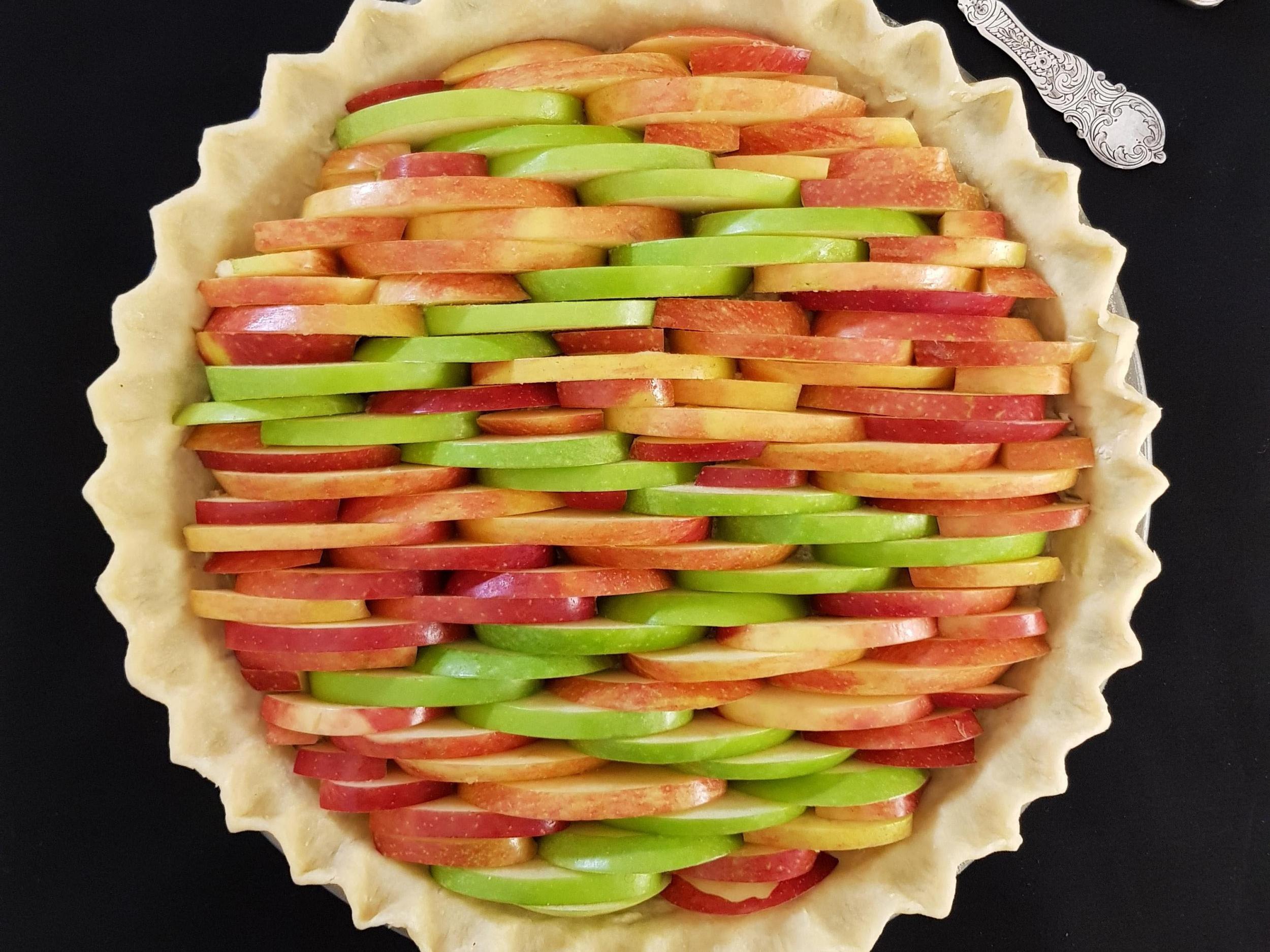
In Germany, a country known more for kuchen than pie, one baker has become a sensation for her design-savvy, American-style pastries.
Karin Pfeiff-Boschek makes three pies each week, posts pictures of them on Instagram and then gives most of them away to friends and charities. Her online pastry portfolio routinely garners thousands of likes and comments.
That’s no surprise, given the stunning appeal of her dough decorations. Her creations, which she says must look good both pre- and post-baked, are embellished with intricate patterns of cutouts and edible appliques.
The result is a culinary theatre-in-the-round, starring a butter-pastry cascade of rosettes, hearts, leaves, vines, berries, braids, stars, paisley, perforations, diamonds and dots.
She also produces square and rectangular slab pies, a concept partly spurred by Pi Day (in March, when the date 3/14 matches the mathematical ratio) and the formula pi r squared.
Her kitchen repertoire, like that of most households, reflects family traditions. The photogenic pastries are a marital merger combining Pfeiff-Boschek’s background in textile design with a bit of apple pie influence from the American midwest.
Her husband, northern Indiana native Bruce Boschek, moved to Germany in the 1960s to study for his PhD. He brought with him lessons in making pie from his mother, who was an award-winning baker.
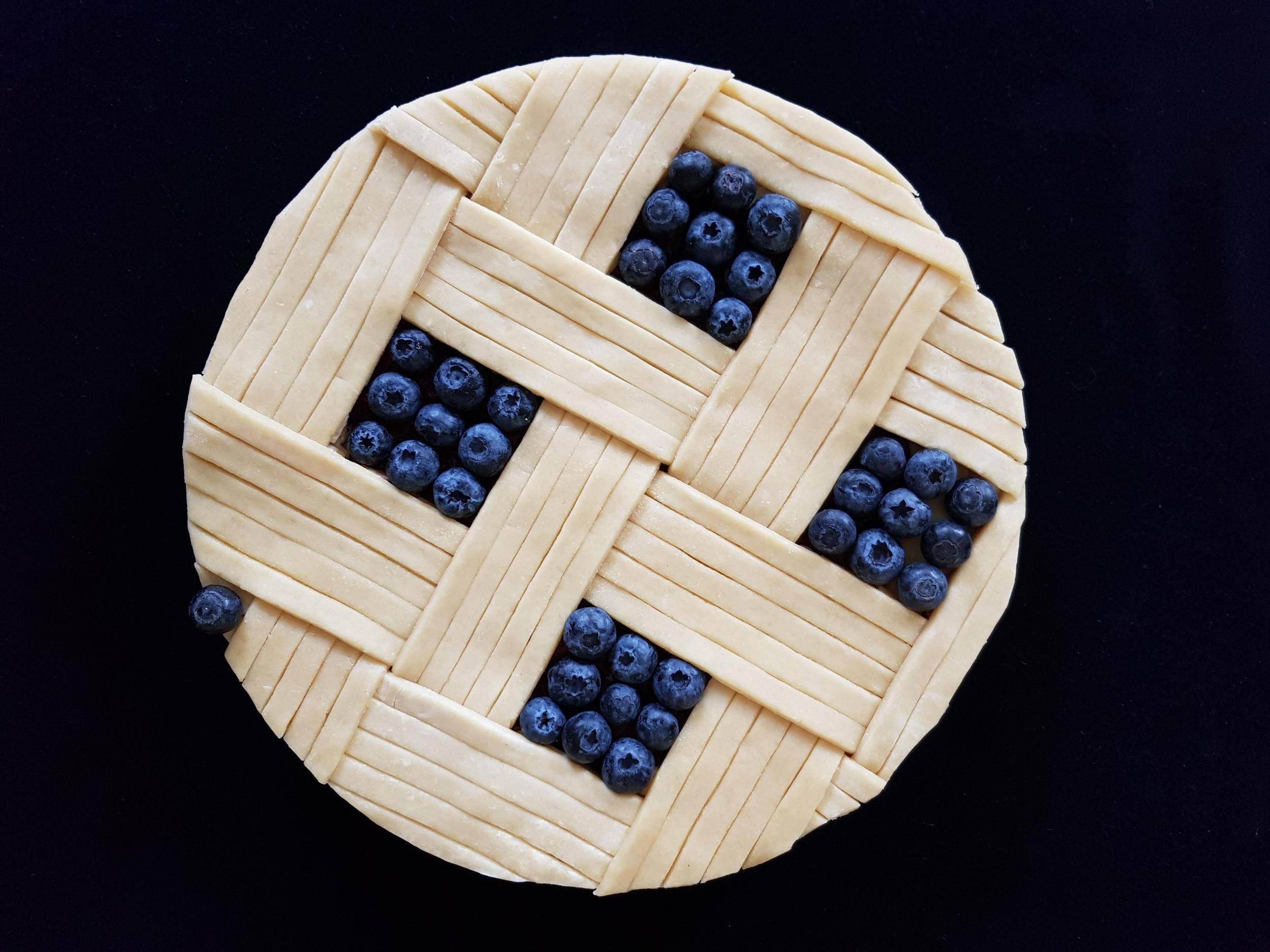
“I always liked his apple, rhubarb, pumpkin or blueberry pies,” Pfeiff-Boschek writes in English via email. “At some point, I thought the top crust would offer a good canvas for artistic creation.”
She, herself, learned to bake from her mother and grandmothers when she was a girl at home in central Germany. Now at the age of “60+”, Pfeiff-Boschek recalls that “cakes were not so interesting because there are many fantastic cake decorators” in her country, whereas pie decoration was “virtually unknown”.
Both cakes and pies have their place, Pfeiff-Boschek says. “I prefer cake with coffee or tea in the afternoon.”
These days, she and her husband both make good use of the generous kitchen in the former abbey where they live in Antrifttal, northeast of Frankfurt.
Her pleasure in the pies is less about the fillings than it is about developing a pleasing design: “I treat the dough as a sculptor treats the marble – perhaps not quite as violently.”
Pfeiff-Boschek’s first serious decorative effort was in September 2016. A year later, she attracted high-profile Instagram praise from Martha Stewart, who said she had “turned pie crust decorating into an art form”.
Like Stewart, Pfeiff-Boschek is a perfectionist.
“To do anything as well as possible is labour-intensive, and my aim in life is to do whatever I do as well as I can,” she says. Her sweet obsession occupies most of her personal time, meaning when she’s not working full-time as secretary to a department head at a German university.
With her husband, she also tends the large gardens around their home. Botanical influences – as well as some offbeat slices of life – find their way onto the tops of her pies. She once modelled a pie after a manhole cover.
“I find inspiration in nature, in all kinds of objects,” she says. “I do also look at graphic patterns, historical, Persian, Moorish, and find inspiration in many of those designs. The possibilities are limitless.”
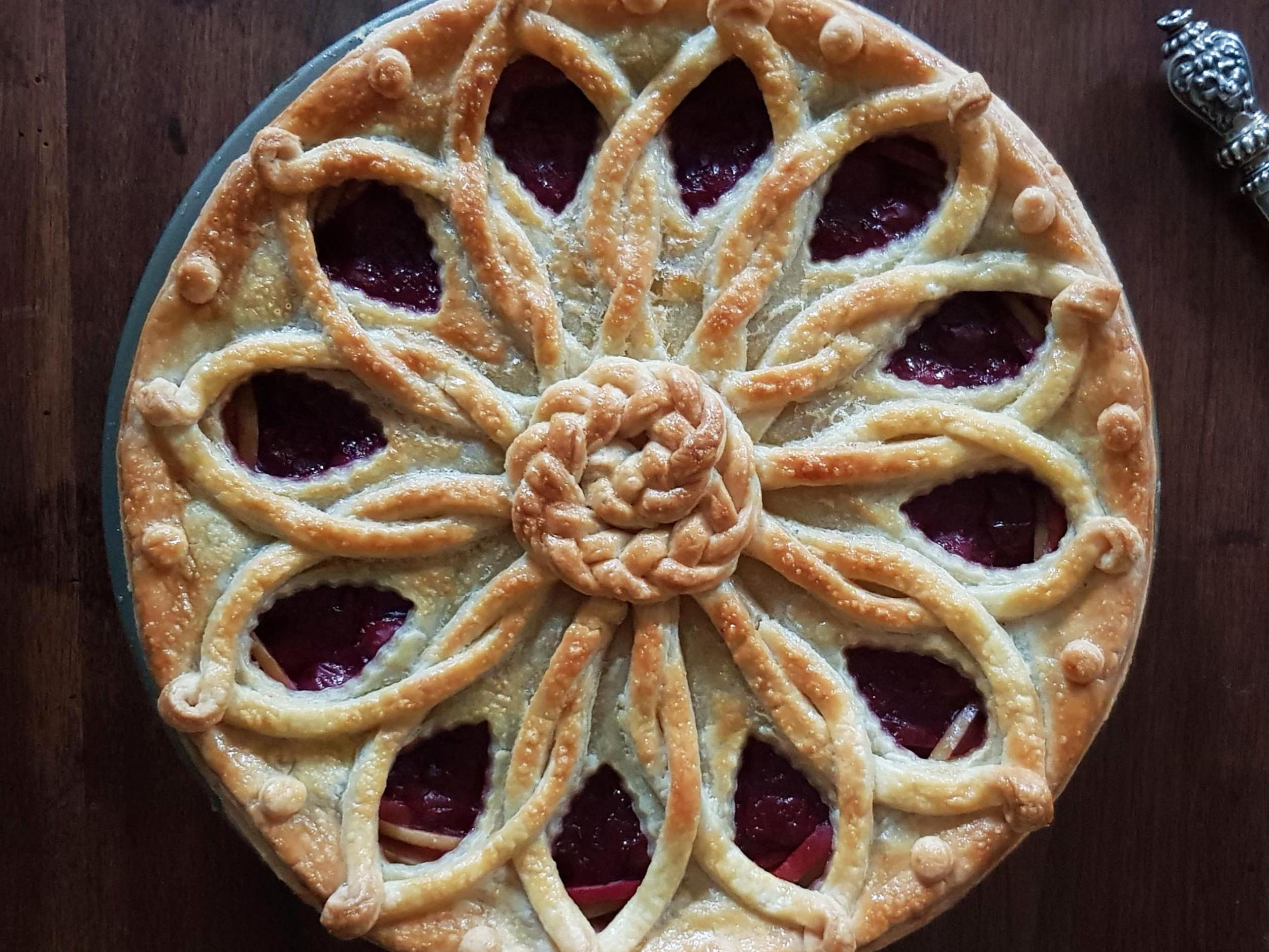
At times, Pfeiff-Boschek uses the fruit filling to create the pattern, as she did with a ropelike design made from green and red apples slices left in their skins for colour. (A light brushing with lemon juice keeps the fruit from yellowing, she says.)
She has also experimented with colour by incorporating powder made from freeze-dried blueberries to create a dramatic purple pastry.
Producing her vision is a task of almost surgical precision. Her toolbox includes 100-plus cookie cutters (some antique, others purchased on Amazon, eBay and at her local kitchen shop) and a sharp knife for freehand work.
“I use scalpels with replaceable blades because they are very sharp and thin and cut dough very smoothly and cleanly,” she says. “One could use so-called hobby knives, like the X-Acto knives used by model builders, too. The only important thing is that they are sharp and thin.”
Working atop a beechwood kitchen island, she prepares her pate brisee pastry using a dowel-like wood rolling pin.
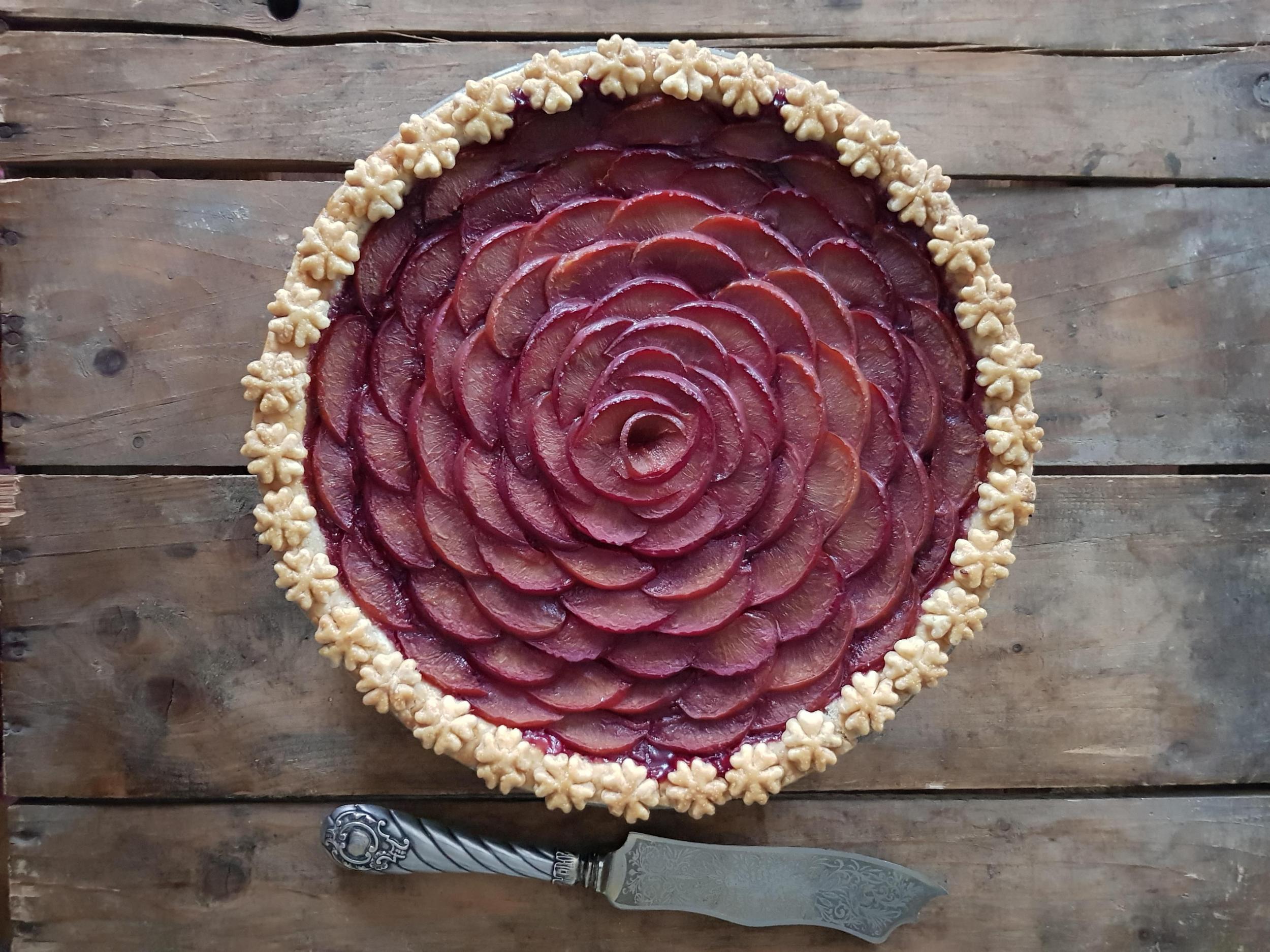
As she meticulously cuts and arranges, the setting is typically quiet, with her husband and their ageing German shepherd mix, Andor, as companions. Occasionally, classical music plays in the background. Most often, she says, it’s “just silence, or Bruce and I discuss the decoration”.
If the top crust is relatively simple, Pfeiff-Boschek decorates it on a flat, metal disk, then cools it and slides it onto the pie.
“I often place it on the disk in the freezer for 10 or 15 minutes to make certain it’s firm enough to slide,” she says. “If it’s more complex, I put the crust on the pie and then add the decorations. It really depends on the design.”
Mixing the basic dough takes about 30 minutes, which is followed by two hours of refrigeration, Pfeiff-Boschek says. Decorating is typically a two-hour task. It can take longer, however, for more complex designs.
The top crust of a pie she titled Geometric Violet and White Waves, which involved creating a paper template and hand-cutting the waves, took nearly eight hours to make – not including the time to make the dough and bake. (She filled the pie with a mix of raspberries, blackberries and blueberries.)
With time and patience, a pie can be turned into a work of art that will stun your guests when you put it on the table, she says.
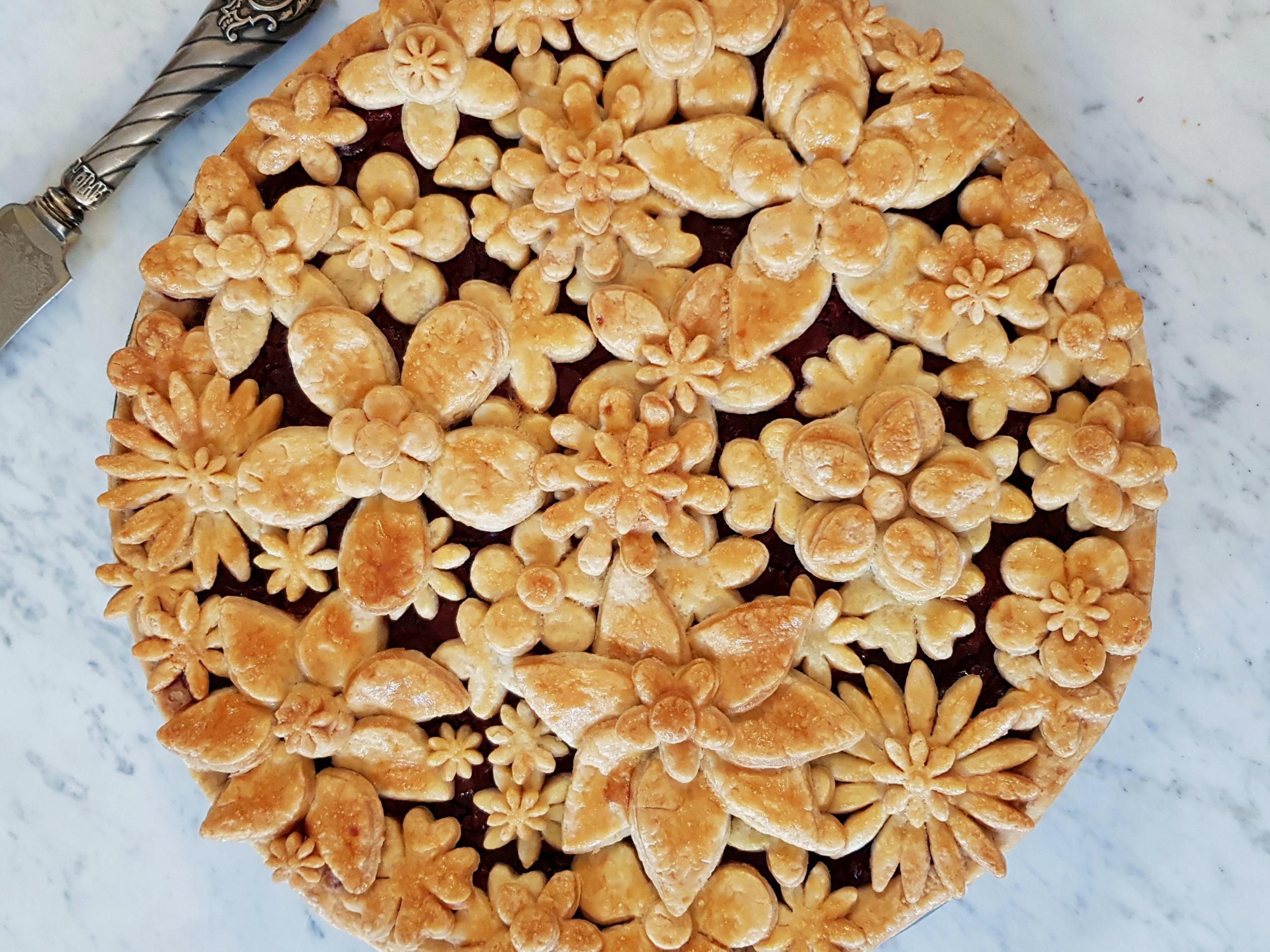
Presenting a sweet centrepiece is part of what she describes as her life’s emphasis on “creating beautiful surroundings, both in our home and in cooking and baking”.
That domestic devotion has included the couple’s personal labours, doing hands-on plastering and woodworking in their century-old home, where they have renovated 21 of the 22 rooms.
One would think the calories burned in their various efforts would earn them a piece of pie. They don’t indulge too often.
“After some time, one actually has eaten enough pie,” she says. But when they do crave a slice, what to select from among her panoply of pastry?
“We always eat chocolate pies. But they are not my favourite to decorate.”
Tips
- For exact crust thicknesses (Pfeiff-Boschek rolls her pastry to a 16th of an inch), she suggests trying a Joseph Joseph brand rolling pin, which measures dough depth.
- Keep the dough cold; this is the key to successful pie decoration.
- Learn to make one pie dough recipe that you “can make in your sleep,” or know by heart.
- Place a baking sheet beneath fruit pies in the oven to catch drips and prevent smoking.
- Try adding a dash of liqueur to fruit-pie fillings.
- When using fruit slices with their skins on for color and decoration, avoid tough-skinned varieties such as Granny Smith.
© Washington Post
Join our commenting forum
Join thought-provoking conversations, follow other Independent readers and see their replies
Comments
Bookmark popover
Removed from bookmarks